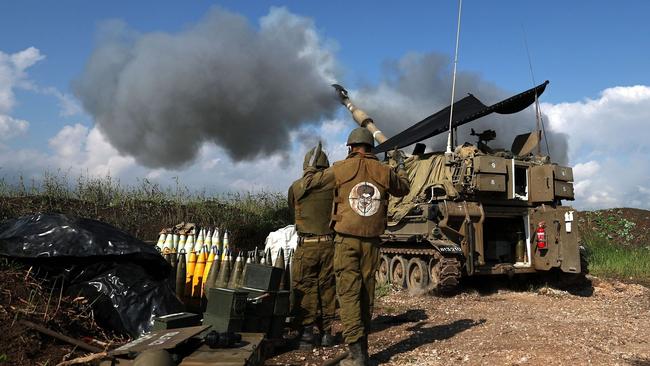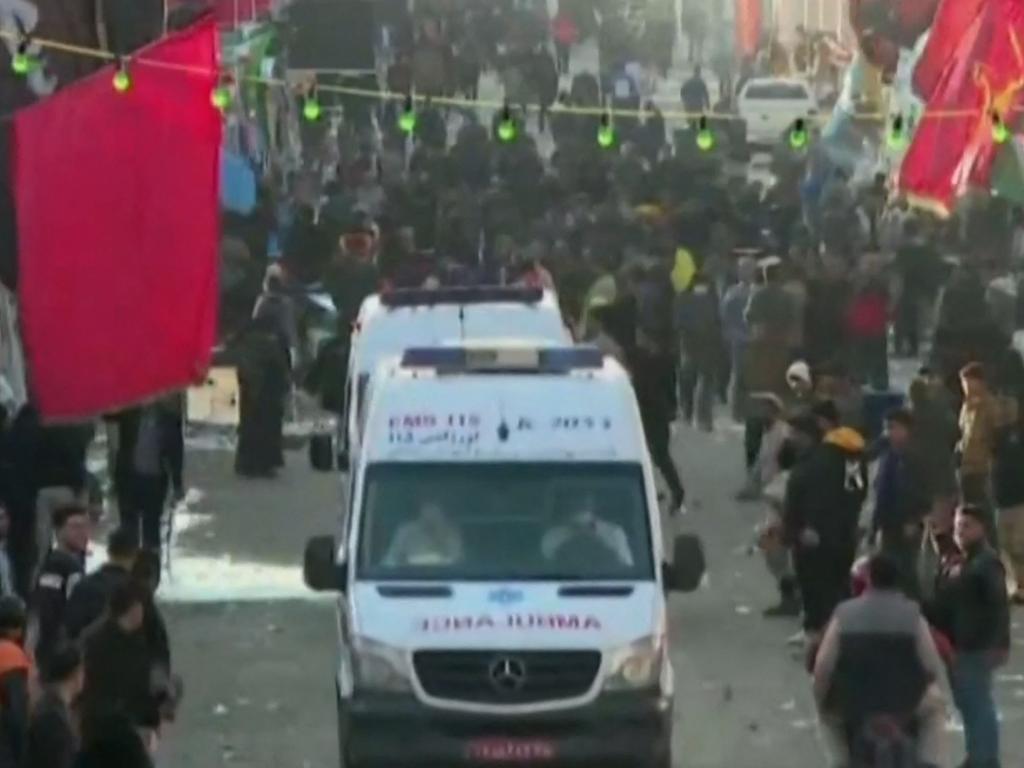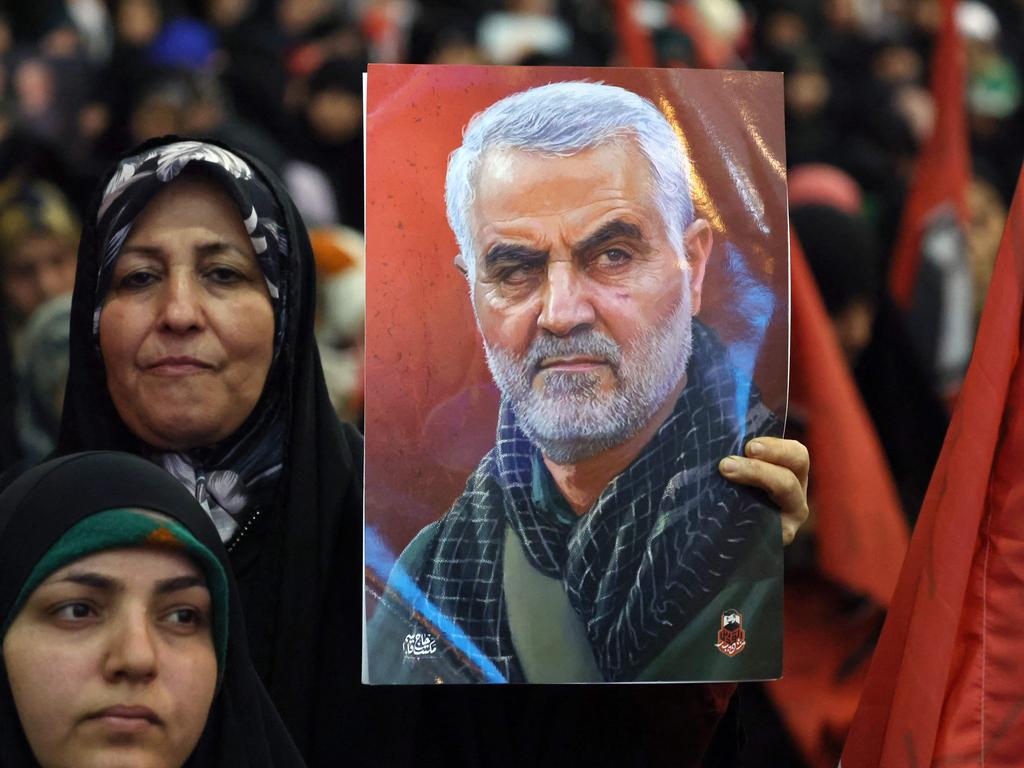US killing of Iran-backed militia leader marks bid to stop attacks on its forces in Iraq
The Biden administration hopes the ‘very bold’ hit in Baghdad will deter further aggression and avoid rising tensions in the region, as fighting rages in Gaza.

A deadly American drone strike on Thursday in Baghdad was the first known targeted killing of an Iranian-backed militia leader by the Biden administration, marking a more aggressive bid to stop ongoing attacks on its forces there, US officials said.
The strike that killed Moshtaq Talib Al-Saadi and one associate as they were travelling in a vehicle in eastern Baghdad was different from previous strikes in Iraq during the Biden administration, which sought to combat regional threats while minimising the risk of escalation between the US and Iran, US officials and observers said.
“It was very bold,” said Michael Knights of the Washington Institute for Near East Policy. “What the US showed was that it can pick a specific terrorist leader, track him in a vehicle and kill him. We haven’t seen the Biden administration do anything like that with Iran-backed militias until now.”
Tensions have been expanding throughout the Middle East since Oct. 7, when Hamas and other militants stormed out of the Gaza Strip and into Israel. The militants killed more than 1200 people, most of them civilians, according to Israeli officials, and captured more than 200 hostages. According to Gaza’s health ministry, more than 22,000 Palestinians have died in the war between Israel and Hamas, a count that includes civilians and Hamas fighters.
“Obviously we want to prevent the conflict from spreading,” State Department spokesman Matthew Miller said about concerns the killing would exacerbate tension in the region. “But part of that means that people need to stop taking strikes against our soldiers, and if they take strike against our soldiers, we’re going to do what we need to protect ourselves, as any country would do.”
With Israel fighting Hamas in Gaza and the Iran-backed Hezbollah militia in Lebanon, and Houthi rebels in Yemen attacking commercial ships in the Red Sea, the Biden administration has been trying to head off a widening of the fighting in the region even as US troops have come under attack by Iran-backed groups in Iraq and Syria.
Militias supported by Iran have carried out at least 120 attacks against US troops in Iraq and Syria since Oct. 17, one of which recently seriously wounded one service member. Though the US is calculating that Thursday’s strike in Baghdad may deter further aggression, some analysts say it could spur further attacks from Iran-backed groups.
Al-Saadi was a member of Harakat al Nujaba, an Iraqi group backed by Iran that the US has implicated in attacks on American forces in Iraq and Syria and designated as a terrorist organisation. Al-Saadi “had American blood on his hands,” a US official said.


Akram al-Kabbi, Harakat al Nujaba’s founder, said he wanted to be the face of the resistance to the US presence in Iraq. The group has been responsible for 69 per cent of attacks on US forces in Iraq and Syria since Oct. 17, according to an analysis of militia attacks by the Washington Institute for Near East Policy.
The group is thought to have been behind a March 2023 drone attack that killed a US contractor in eastern Syria, the last time an American was killed by a militia group in Syria and Iraq. A spokesman for the group told The Wall Street Journal last year that the militia supported that attack but denied his group had carried it out.
The Pentagon described the strike as a self-defence measure that was “necessary and proportionate action.” It didn’t spell out how the group had endangered US troops or say whether the US notified the Iraqi government before the strike. The Pentagon said no civilians were harmed and no infrastructure or facilities were struck.
Roughly 2500 US troops are deployed in Iraq, where they are mentoring Iraqi forces who have been battling remnants of Islamic State.
Al-Saadi’s killing has fuelled debate in Iraq about the American military presence there, and came one day after the fourth anniversary of the Trump administration’s drone strike that killed Iran paramilitary leader Qassem Soleimani as he was leaving the Baghdad airport.
Iraq’s government said Thursday’s attack was a blatant violation of the country’s security and sovereignty and undermined “all agreements between Iraqi forces and coalition forces in Iraq.” “We view this action as a dangerous escalation and assault on Iraq, diverging from the spirit and the text of the mandate and the mission for which the Global Coalition was established in Iraq,” said Yehia Rasool, spokesman for the Iraqi military.
Harakat al Nujaba said in a statement on its Telegram channel that the militia official had been killed unjustly.

“The US is attempting to reassert deterrence and this is certainly the most assertive step the Biden administration has taken in that direction, ” said Charles Lister, director of the Syria and counter-terrorism programs at the Washington-based Middle East Institute. “But from the other perspective, the administration has been consistently determined to retain a military presence in Iraq and this strike could place that deployment in jeopardy.” Following the initial attacks by Iran-backed militias in October, the American military response was cautious:
The first few US strikes were carried out in Syria against weapons- storage sites and training areas used by Iran-backed militias and Tehran’s Islamic Revolutionary Guard Corps. Calibrated to minimise the risk of escalation, the half-dozen retaliatory strikes resulted in a small number of enemy casualties. But each strike was followed by more militia drone and rocket attacks.
The Biden administration initially refrained from striking militias in Iraq out of concern that it would inflame the debate in that country over the presence of US troops, foreign policy experts say.
That changed in November, when a US AC-130 gunship attacked Kataib Hezbollah, a prominent Iran-backed militia that has long targeted American forces, in response to an attack on the Al-Asad Air Base in Western Iraq, where US forces are based. The US responded to militia attacks with two additional strikes against the groups before Thursday’s drone strike in Baghdad.
Dion Nissenbaum, Ghassan Adnan and William Mauldin contributed to this article.
The Wall Street Journal







To join the conversation, please log in. Don't have an account? Register
Join the conversation, you are commenting as Logout